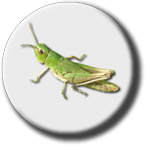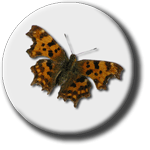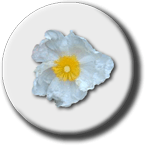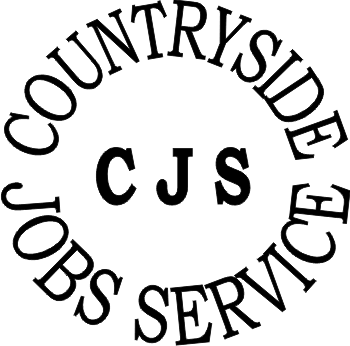Wildlife
Gardening
With Martin Prescott
I
live just to the north of Manchester, not a place noted
for it's wealth of wildlife,  and
I am made slightly envious by e-mails sent by some friends living near St. Ives,
especially when they report seeing dolphins. Their latest news was that they
had frogs and toads breeding in their garden pond. Nothing unusual in that,
except that this was at the end of January!
and
I am made slightly envious by e-mails sent by some friends living near St. Ives,
especially when they report seeing dolphins. Their latest news was that they
had frogs and toads breeding in their garden pond. Nothing unusual in that,
except that this was at the end of January!
It is said that spring marches north at about walking pace,
but this year it must have set off at a jog, because my own garden pond had
frogs in it by the 10th February. They are not spawning yet; the early arrivals
(possibly only "arriving" from hibernation at the bottom of the pond)
will be males who will have to endure a frustrating wait of a week or two before
the girls arrive. Shortly after this I am expecting smooth and palmate newts.
It just shows what will make use of a small garden pond, in this case 2 metres
by 1 metre, if the design and situation is right, even if it is in an urban
area.
 The
whole garden (all 4 by 7 metres of it) is designed with wildlife in mind. The
privet hedge went years ago, and now a mixture of hawthorn, blackthorn, holly,
dog rose and honeysuckle give colour - and food for wildlife - in the form of
flowers or berries all year round. The lawn has been enriched with wildflowers
such as self-heal, cat's ears, yellow rattle and primroses, and allowed to grow
long in summer, much to the disgust of the owners of pieces of 'astro-turf"
nearby. "Call yourself a gardener?" But I'm happy with it;
and it's hoverflies, grasshoppers and butterflies. They can keep their sterile
green squares. The flower beds, almost merging with the lawn nowadays, are full
of pest-resistant native wildflowers. Scabious, knapweed, hemp agrimony, greater
stitchwort and marjoram all thrive without the use of chemical bug-killers;
and without chemicals and fertilizers, the beneficial bugs, such as ladybirds,
come in droves and keep the harmful ones from reaching plague proportions.
The
whole garden (all 4 by 7 metres of it) is designed with wildlife in mind. The
privet hedge went years ago, and now a mixture of hawthorn, blackthorn, holly,
dog rose and honeysuckle give colour - and food for wildlife - in the form of
flowers or berries all year round. The lawn has been enriched with wildflowers
such as self-heal, cat's ears, yellow rattle and primroses, and allowed to grow
long in summer, much to the disgust of the owners of pieces of 'astro-turf"
nearby. "Call yourself a gardener?" But I'm happy with it;
and it's hoverflies, grasshoppers and butterflies. They can keep their sterile
green squares. The flower beds, almost merging with the lawn nowadays, are full
of pest-resistant native wildflowers. Scabious, knapweed, hemp agrimony, greater
stitchwort and marjoram all thrive without the use of chemical bug-killers;
and without chemicals and fertilizers, the beneficial bugs, such as ladybirds,
come in droves and keep the harmful ones from reaching plague proportions.
I allow ivy to grow up the house, short of the gutters, and
I have two buddleias which teem with insects at the end of summer. It's a lot
to cram into a small garden, but, with the pond as its focus, it's a source
of endless fascination. But more than that, it is a genuine refuge for wildlife
in an area losing semi-natural habitats at an alarming rate. 
It is said that private gardens in Britain cover an area equivalent
to that of the Isle of Wight. What an opportunity for nature conservation! Imagine
that huge area, with millions of small ponds, thousands of miles of mixed hedges
and hundreds of thousands of acres of wildflower meadow. There wouldn't be a
nature reserve to touch it! And with surprisingly little effort, you could have
part of this super-nature reserve right on your doorstep. Start by feeding the
birds regularly and providing nest boxes, resist the use of pesticides - if
you grow something prone to damage, replace it with something that isn't - put
in a fish-free pond, add a few native plants and enjoy the show!
Martin Prescott of Habiscapes Wildlife Gardening 0161 796 6211
Back to Articles

 and
I am made slightly envious by e-mails sent by some friends living near St. Ives,
especially when they report seeing dolphins. Their latest news was that they
had frogs and toads breeding in their garden pond. Nothing unusual in that,
except that this was at the end of January!
and
I am made slightly envious by e-mails sent by some friends living near St. Ives,
especially when they report seeing dolphins. Their latest news was that they
had frogs and toads breeding in their garden pond. Nothing unusual in that,
except that this was at the end of January!  The
whole garden (all 4 by 7 metres of it) is designed with wildlife in mind. The
privet hedge went years ago, and now a mixture of hawthorn, blackthorn, holly,
dog rose and honeysuckle give colour - and food for wildlife - in the form of
flowers or berries all year round. The lawn has been enriched with wildflowers
such as self-heal, cat's ears, yellow rattle and primroses, and allowed to grow
long in summer, much to the disgust of the owners of pieces of 'astro-turf"
nearby. "Call yourself a gardener?" But I'm happy with it;
and it's hoverflies, grasshoppers and butterflies. They can keep their sterile
green squares. The flower beds, almost merging with the lawn nowadays, are full
of pest-resistant native wildflowers. Scabious, knapweed, hemp agrimony, greater
stitchwort and marjoram all thrive without the use of chemical bug-killers;
and without chemicals and fertilizers, the beneficial bugs, such as ladybirds,
come in droves and keep the harmful ones from reaching plague proportions.
The
whole garden (all 4 by 7 metres of it) is designed with wildlife in mind. The
privet hedge went years ago, and now a mixture of hawthorn, blackthorn, holly,
dog rose and honeysuckle give colour - and food for wildlife - in the form of
flowers or berries all year round. The lawn has been enriched with wildflowers
such as self-heal, cat's ears, yellow rattle and primroses, and allowed to grow
long in summer, much to the disgust of the owners of pieces of 'astro-turf"
nearby. "Call yourself a gardener?" But I'm happy with it;
and it's hoverflies, grasshoppers and butterflies. They can keep their sterile
green squares. The flower beds, almost merging with the lawn nowadays, are full
of pest-resistant native wildflowers. Scabious, knapweed, hemp agrimony, greater
stitchwort and marjoram all thrive without the use of chemical bug-killers;
and without chemicals and fertilizers, the beneficial bugs, such as ladybirds,
come in droves and keep the harmful ones from reaching plague proportions. 